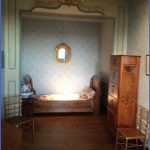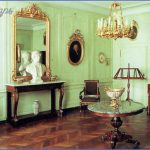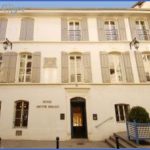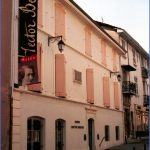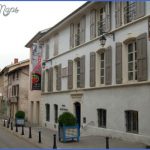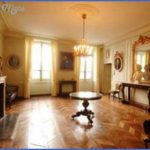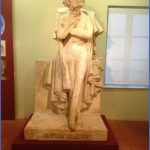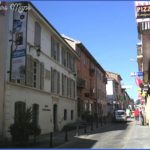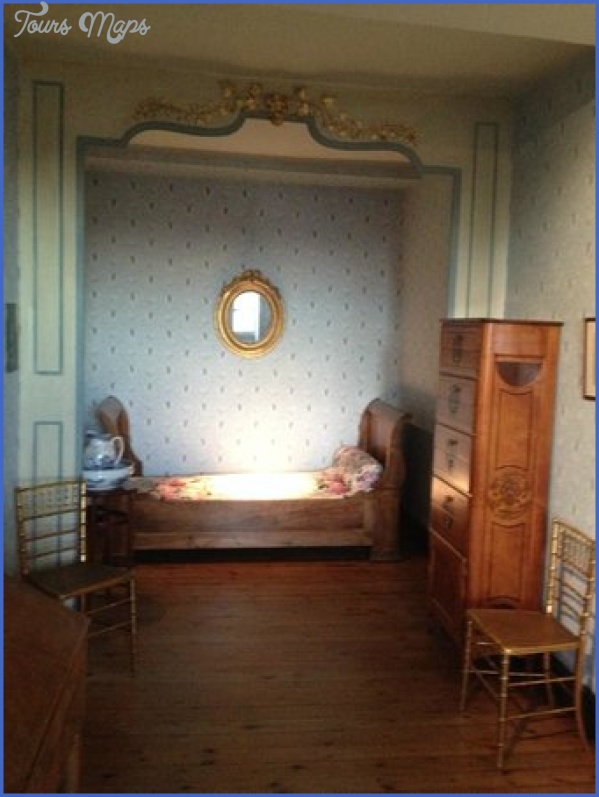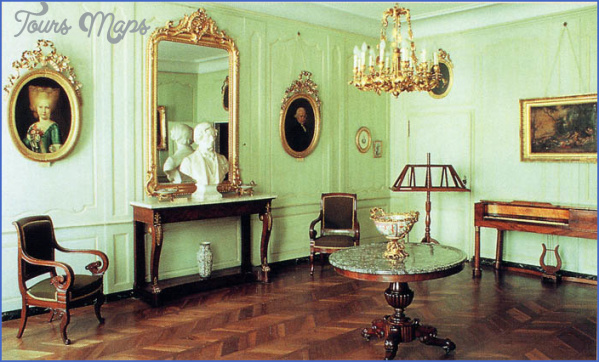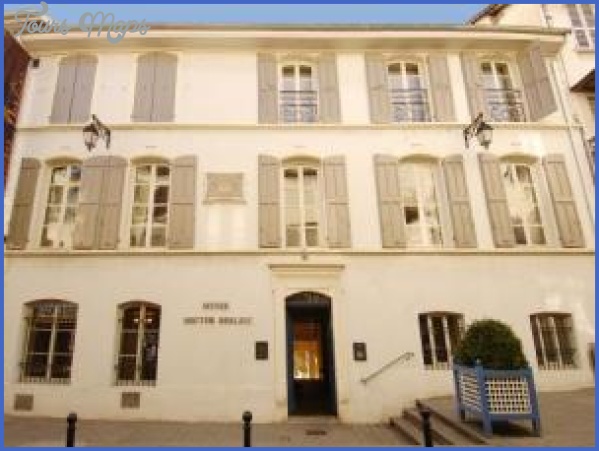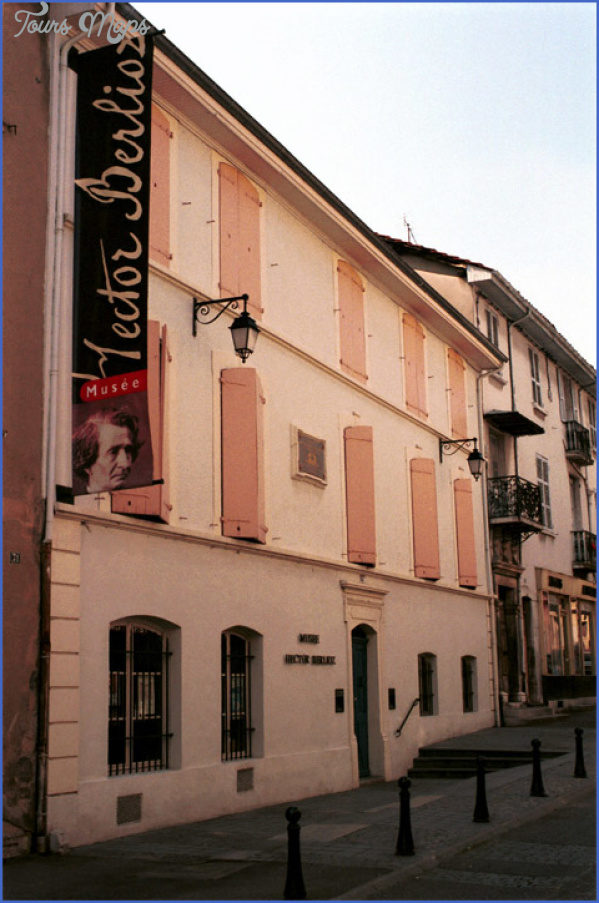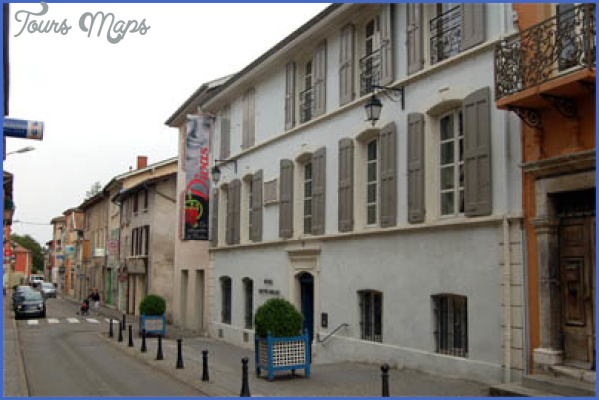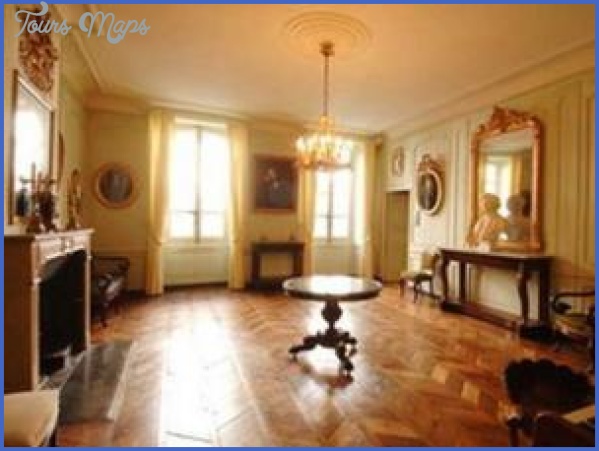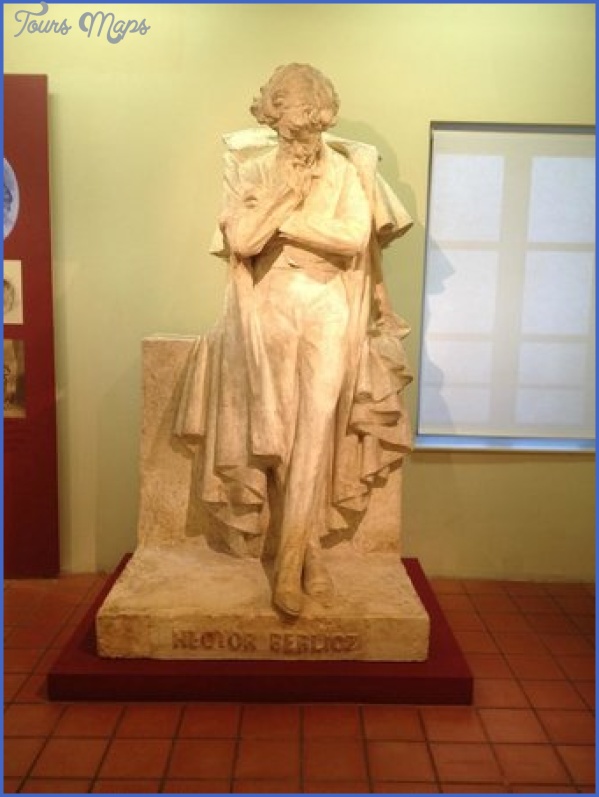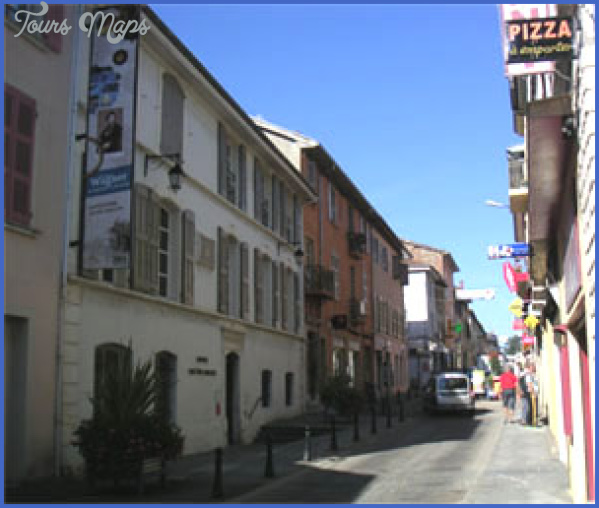Until he was 18, Hector Berlioz lived in the house where, on 11 December 1803, he was born: 69 rue de la Republique, La Cote-Saint-Andre, in the Bas-Dauphine region. He was the eldest of the five children of a respected doctor in this small town, now of around 5000 people, about halfway between Grenoble and Lyons, close to the A48 motorway. His father taught him the flageolet and then sent him to a teacher imported from Lyons by the better-off cotoise families for lessons on the flute and guitar; Hector taught himself harmony from the treatises of Rameau and Charles-Simon Catel.
Berlioz was a precocious child: he was 12 when he conceived the passion for the 18-year-old Estelle Duboeuf that was to draw him repeatedly to the region in his late years. He had left it in 1821, with a bachelor’s degree in medicine from Grenoble, to study in Paris. Three years later he abandoned medicine and committed himself to music, in defiance of his father, who was affectionate but domineering (and who never heard a performance of any work of his son’s). He struggled through his Conservatoire studies without adequate support. In 1823 and 1825 he visited La Cote, but the reunions were acrimonious, and it was not until 1830, when he won the Prix de Rome, that his parents recognized that his passion for music was based on a true gift and there was a reconciliation. The next year he spent a month at home, and the following year five months; he returned only in 1847, the year before his father’s death, bringing with him Louis, the son of his first marriage, to Harriet Smithson. In 1848 the house was closed; his sister Adele owned it until her death in 1860 when it passed to her two daughters, who sold it in 1874.
BERLIOZ MUSEUM Photo Gallery
Built in the 1680s and acquired in 1732 by Berlioz’s great-grandfather, the house is spacious, on four floors with an attic. The facade to the rue de la Republique, the main street of the town, is rather austere, but the rear is charming, with a U-shaped balcony at first-floor level, overlooking a garden with ivy-covered walls. It was purchased by the Societe des Amis de Berlioz in 1932 and opened as a museum in 1935. Little was done, however, to maintain the building, and just before the Berlioz centenary year, 1969, it was taken over by the departement
The Berlioz family home, seen from the garden of Isere, classified as a national monument, restored and put under the direction of the Association Nationale Hector Berlioz with an honorary curator. It was further restored in 1984 and again in time for the bicentenary year of 2003.
It manages to be both a well-organized survey of Berlioz’s life and times and at the same time a museum of 19th-century family life, with its display of middle-class French furniture of the time. On the ground floor are a foyer and a shop and two display rooms: one with a diorama surveying ‘L’Europe romantique’ and the people who most influenced Berlioz, the other ‘1803-69: Episodes de la vie d’un artiste’, with the 1840 portrait by Paul de Pommayra and a series of display boards highlighting a number of phases of his life (he died in 1869). The visitor has use of a handset, with a choice of languages, in which the captions (exclusively in French) are translated.
On the mezzanine floor, at the rear of the house, are a family kitchen, restored as it might have been in Berlioz’s childhood, and Dr Berlioz’s room, where a set of contemporary medical instruments is to be seen along with his umbrella, a surgical book that he wrote and his wife’s gold watch, all overseen by his portrait. Berlioz’s grandparents watch over the small, family dining-room, in tasteful decor of the time, with a cupboard of china and silver. Across the landing is Hector’s own bedroom (it is made clear that there can be no certainty about the original role of each room, but the putative arrangement is plausible and sensible). Here, with the walls restored to their probable original blue, are reproductions of his birth registration, his diplomas and letters, books that represent his early enthusiasms, a flute and a guitar of the time and early portraits.
On the first floor, at the front of the house, is the ‘Petit salon-bibliotheque’, restored in Louis XVI style with a display devoted to Berlioz’s love life, in pictures and correspondence. The ‘Grand salon’ is more formal, in a Louis XV style; in it is the Erard upright piano that Berlioz chose for his nieces, as well as family portraits and a letter to his sister Adele. The exhibit in the small anteroom is concerned with his musical education. There is a smaller Erard, a table piano, in the room taken to be that of his birth, where there are china and glass, a pen and inkstand, a tie-pin and a wax seal from his Paris house of the mid-1830s, along with trophies from further afield -china from Grand Duchess Yelena of Russia, a laurel wreath from Vienna, an eagle from Prussia, a silver baton from Brunswick and a variety of diplomas.
The rooms thought to have been his sisters’ are on the second mezzanine: Adele’s contains letters and portraits, Nanci’s some more personal objects: his Legion d’honneur, a lock of his hair (snow white), a death mask, a facsimile of the last lines of his memoirs, a silver laurel from Hungary, a ruby crown from Grenoble and other busts and memorials. On the second floor proper, where material is available through an interactive computer terminal, one room is devoted to his work as a writer – his escritoire, his books, his letters, his concert notes, his memoirs – and the other to his work as a musician, conductor as well as composer, organized by genre and enhanced by display boards on the Conservatoire and open-air music and an expense account for a performance of the Symphonie fantastique (note the ‘Sapeurs pompiers [firemen], 5 fr. 50’).
There is a basement too in this capacious museum: two rooms deal with performance history, up to modern times, and there is a video room seating 25 and exhibition space. The museum’s meticulous labelling and audio commentary are exemplary.
Maybe You Like Them Too
- Top 10 Islands You Can Buy
- Top 10 Underrated Asian Cities 2023
- Top 10 Reasons Upsizing Will Be a Huge Travel Trend
- Top 10 Scuba Diving Destinations
- World’s 10 Best Places To Visit

